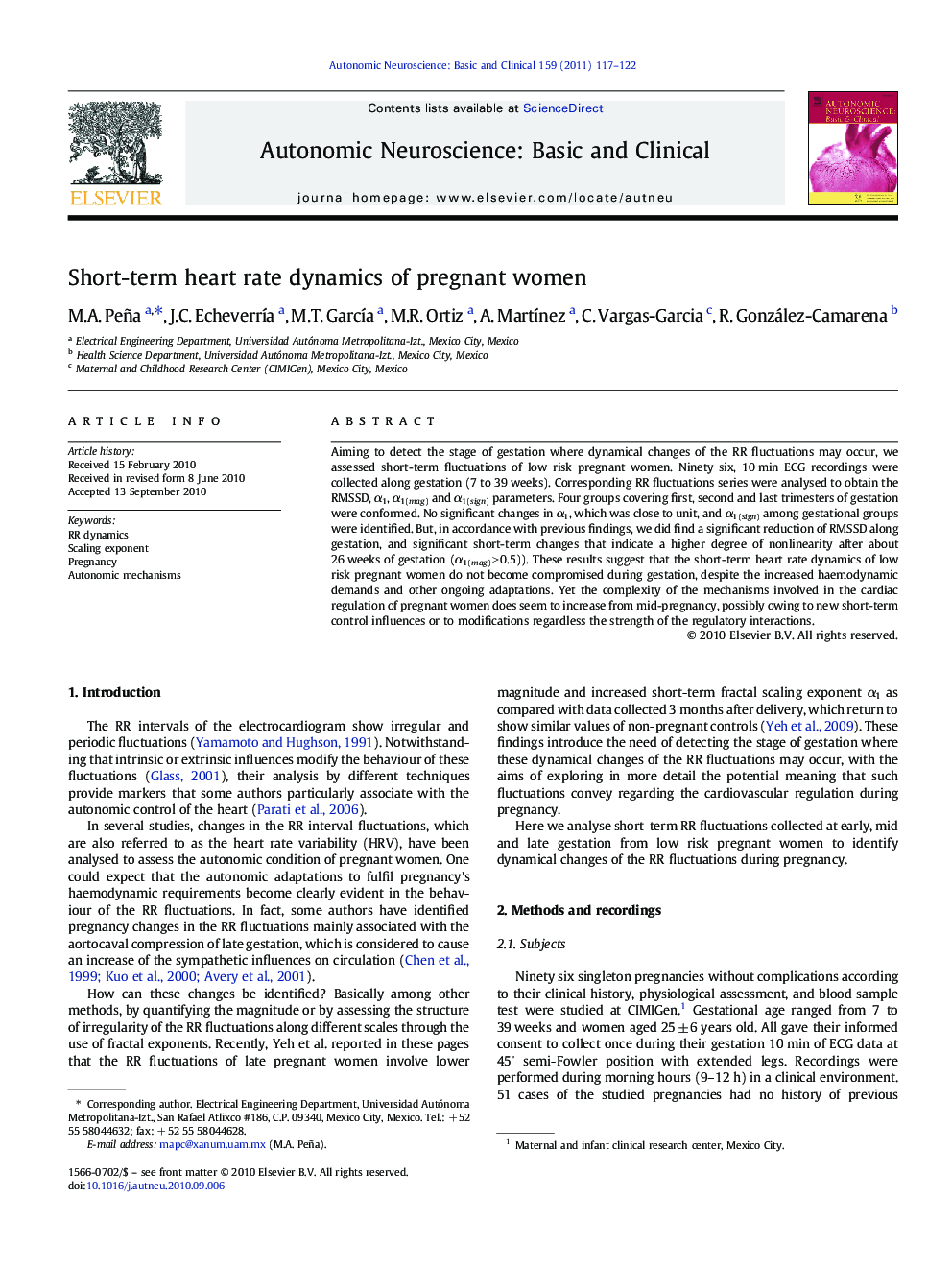| Article ID | Journal | Published Year | Pages | File Type |
|---|---|---|---|---|
| 3035036 | Autonomic Neuroscience | 2011 | 6 Pages |
Abstract
Aiming to detect the stage of gestation where dynamical changes of the RR fluctuations may occur, we assessed short-term fluctuations of low risk pregnant women. Ninety six, 10 min ECG recordings were collected along gestation (7 to 39 weeks). Corresponding RR fluctuations series were analysed to obtain the RMSSD, α1, α1(mag) and α1(sign) parameters. Four groups covering first, second and last trimesters of gestation were conformed. No significant changes in α1, which was close to unit, and α1(sign) among gestational groups were identified. But, in accordance with previous findings, we did find a significant reduction of RMSSD along gestation, and significant short-term changes that indicate a higher degree of nonlinearity after about 26 weeks of gestation (α1(mag) > 0.5)). These results suggest that the short-term heart rate dynamics of low risk pregnant women do not become compromised during gestation, despite the increased haemodynamic demands and other ongoing adaptations. Yet the complexity of the mechanisms involved in the cardiac regulation of pregnant women does seem to increase from mid-pregnancy, possibly owing to new short-term control influences or to modifications regardless the strength of the regulatory interactions.
Keywords
Related Topics
Life Sciences
Neuroscience
Cellular and Molecular Neuroscience
Authors
M.A. Peña, J.C. EcheverrÃa, M.T. GarcÃa, M.R. Ortiz, A. MartÃnez, C. Vargas-Garcia, R. González-Camarena,
